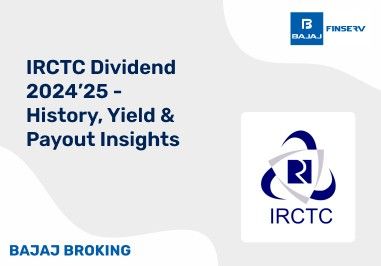In investments, one doesn't always have to put in all their money up front. There are investment plans that accept recurring payments on a regular interval, and offer an appreciated amount at maturity of the scheme. This works pretty much like a recurring deposit system. These are systematic investment plans or SIPs. The 8-4-3 Rule is a simple yet effective strategy to invest smartly in SIPs.
The 8-4-3 Rule in SIP is a guideline that helps investors make sense of the potential of investing in SIPs. It explains the beauty of compounding, and the importance of consistent investment over a long period of time. The rule has three components.
8% Returns: The rule takes the interest rate to be 8 percent, which is a reasonable rate of returns for most equity mutual funds in the long term.
4X Growth: Investing as per this rule will bring quadruple returns on your investment on maturity.
3 Decades: For the rule to work, you will have to invest for a 30-year period in an SIP offering 8 percent returns.
The rule tries to educate investors about how disciplined investment over a long period can bring stunning results. Patience and consistency are key in SIPs, and this rule reiterates exactly that. The secret sauce that makes this rule work is the concept of compounding.
Power of Compounding
It is perhaps one of the toughest concepts to grasp when it comes to investing, but it is what is going to make your money grow. Think of it as so: Your investment is generating more money on its own by earning money on your principal amount, as well as all the earnings you've made along the way. The longer your money is invested, the more potent compounding will become.
In the early years of investing, the growth of your investment may seem slow. This is because compounding takes time to fully express itself. However, as the years go by, your returns start creating their own returns, which leads to exponential growth. That is the essence of why long-term investing is so effective: it is the snowball effect.
By committing to a 30-year Systematic Investment Plan, as the 8-4-3 Rule of compounding advises, you let your investments have time to grow exponentially, and therefore, allow yourself to reach considerable financial goals without requiring an extraordinary initial sum.
Example of 8-4-3 Rule in SIP
Let us break it further down and understand with the help of an example how the 8-4-3 Rule really works. Suppose you invest ₹5,000 a month through SIP, and you have managed to earn a total return of approximately 8% a year on these investments. Decades after, this may look like this:
Key Parameters:
Monthly SIP Amount: ₹5,000
Annual Return Assumed: 8%
Investment Period: 30 years
Years
| Total Investment (₹)
| Approximate Wealth Accumulated (₹)
|
10
| ₹6,00,000
| ₹9,30,000
|
20
| ₹12,00,000
| ₹35,00,000
|
30
| ₹18,00,000
| ₹70,00,000
|
This table shows how compounding accelerates the growth of your wealth as time unfolds. Note that the longer the investment lasts, the more pronounced the compounding effect becomes.
Benefits of the 8-4-3 Rule in SIP
The 8-4-3 Rule presents numerous advantages for investors eager to systematically increase their wealth. Here are the key benefits:
Simple Framework: This rule streamlines the process of long-term investing, rendering it approachable even for novices.
Encourages Discipline: Consistent SIP investments foster financial discipline, helping to avert impulsive choices.
Harnesses Time: By emphasizing a 30-year horizon, the rule highlights the importance of starting early and remaining invested.
Reduces Risk: Long-term investing smooths out the impact of short-term market fluctuations.
Creates Wealth: It works well with the compounding principle, maximizing returns over time.
Goal-oriented Investing: The framework aligns investments with long-term financial goals, such as retirement planning or children's education.
Flexible: The rule can be scaled to any investment amount, making it suitable for a wide range of investors.
Strategies to Maximize Returns with the 8-4-3 Rule
Though the 8-4-3 Rule gives you a clear strategy, there are further measures you can adopt to ensure your investments yield their best potential. Here are some strategies worth noting:
Begin Early: The sooner you embark on your SIP journey, the greater the opportunity for your investments to compound.
Stay Consistent: Adhere to your SIP plan, even amidst market downturns, to take advantage of rupee cost averaging.
Invest in quality funds: Invest in funds that have a proven track record and are aligned with your risk tolerance and financial goals.
Reinvest your earnings: Do not withdraw your returns. Let them stay invested to maximize compounding benefits.
Review periodically: Assess your investments periodically to ensure they remain aligned with your goals and make adjustments if necessary.
Diversify your portfolio: Spread your investments across multiple funds to reduce risk and improve potential returns.
Stay Calm: Don't overreact to short-term market fluctuations and keep your eyes on the long-term picture.
Conclusion
The 8-4-3 Rule of SIP is a very simple guide for investors who aspire to achieve long-term financial growth. It shows the importance of regular investing, accompanied by patience, as a means to create enormous wealth. It makes the otherwise complex process of investing easy to follow by making it understandable to people through the principles of compounding and long-term discipline.
However, always remember that the rule is just a guideline, not an absolute formula. Returns depend on the market condition, the funds one chooses, and individual discipline. What is important is to start early, maintain discipline, and let your investments grow with time.
Do you have a trading account app or demat account app?
You can open an account with Bajaj Broking in minutes.
Download the Bajaj Broking app now from Play Store or App Store.
Disclaimer: Investments in the securities market are subject to market risk, read all related documents carefully before investing.
This content is for educational purposes only. Securities quoted are exemplary and not recommendatory.
For All Disclaimers Click Here: https://www.bajajbroking.in/disclaimer













